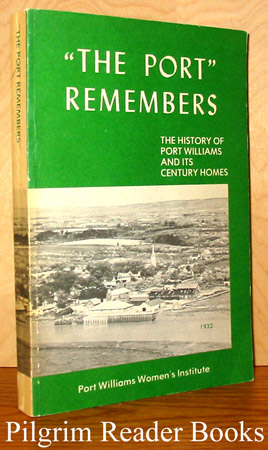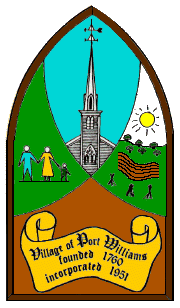The soil of Port Williams is classed on the provincial soil survey map as one of the better formations in the Valley. Natural drainage is good and in addition to this, the closeness of the Cornwallis River on the south side and the Canard River on the north, gives several degrees of frost protection at both ends of the growing season.
In 1682, a number of emigrants from Port Royal came to Pierre's Creek, now Port Williams. These Acadian farmers were originally from the west coast of France, and were accustomed to marshy, dyked land. With their knowledge of dykelands, they soon saw the prospects of the rich marshes. How soon they began to build these dykes, we do not know, but before the expulsion, they had dyked nearly 2000 acres. On their dykelands they grew wheat, rye, oats, peas, flax and hay. They also brought out small fruit trees from France and planted orchards, which produced pears, plums, cherries and apples.
In the summer of 1760 the first of the New England Planters, came to the land vacated through the expulsion of the Acadians in 1755. These settlers were farmers and brought with them livestock, farming utensils and the seed for future crops. Descendants of some of these New England Planters are still actively farming in Port Williams.
Today, agriculture still plays an important role in the Village. Port Williams boasts a diverse agricultural industry with farms producing a variety of high quality, nutritious products including: apples, pears, vegetables, strawberries, raspberries, beef, sheep, milk, eggs, turkeys, chicken, sod, wheat, corn, soybeans and hay.
Historical information taken from the book, "The Port Remembers", published by the Port Williams Women's Institute - 1976

In 1682, a number of emigrants from Port Royal came to Pierre's Creek, now Port Williams. These Acadian farmers were originally from the west coast of France, and were accustomed to marshy, dyked land. With their knowledge of dykelands, they soon saw the prospects of the rich marshes. How soon they began to build these dykes, we do not know, but before the expulsion, they had dyked nearly 2000 acres. On their dykelands they grew wheat, rye, oats, peas, flax and hay. They also brought out small fruit trees from France and planted orchards, which produced pears, plums, cherries and apples.
In the summer of 1760 the first of the New England Planters, came to the land vacated through the expulsion of the Acadians in 1755. These settlers were farmers and brought with them livestock, farming utensils and the seed for future crops. Descendants of some of these New England Planters are still actively farming in Port Williams.
Today, agriculture still plays an important role in the Village. Port Williams boasts a diverse agricultural industry with farms producing a variety of high quality, nutritious products including: apples, pears, vegetables, strawberries, raspberries, beef, sheep, milk, eggs, turkeys, chicken, sod, wheat, corn, soybeans and hay.
Historical information taken from the book, "The Port Remembers", published by the Port Williams Women's Institute - 1976


